Baseball History Comes Alive Now Ranked #2 by Feedspot Among All Internet Baseball History Websites and Blogs!
Guest Submissions from Our Readers Always Welcome!
Scroll Down to Read Today’s Essay
Subscribe to Baseball History Comes Alive for automatic updates. As a Free Bonus, you’ll get instant access to my Special Report: Gary’s Handy Dandy World Series Reference Guide!
Willie Mays and the 1954 New York Giants Photo Gallery
Click on any image below to see photos in full size and to start Photo Gallery:
Michael Keedy’s Top Ten Greatest World Series Catches
Number Four:
Willie Mays, “The Catch,” and the 1954 World Series
That Coogan’s Hollow Feeling
“Part of the charm of the Polo Grounds…is that a man pitching a game can, without turning his head, listen to fans in the right-field stands ask each other for matches.” -Sportswriter Jimmy Breslin
The New York Yankees opened Casey Stengel’s highly successful managerial career by capturing an unprecedented five consecutive world titles. They then promptly added another five pennants and two more world championships before their eccentric-but-brainy field boss was fired in the wake of the 1960 season. Oddly enough, the Old Man’s best record came in 1954, when the Yankees went 103-51.
It was odd because they finished second to the Cleveland Indians that year, a full eight games out of the money. All the while, the “Perfessor” continued to talk gibberish to the press while shrewdly platooning his players to a record of two wins out of every three games played.
A persuasive measure of the ’54 Indians superiority was their 111 wins, most ever by an American League club in the pre-expansion era. Their winning percentage (.721) stands as the greatest in league history. Only once—when they dropped a road series to Chicago—did they lose as many as four straight. That is, until Cleveland met up with the New York Giants in the World Series. The Tribe was so powerful that, before the Series opened, 110 baseball writers out of 154 polled predicted Cleveland would prevail. Not a single one forecasted a New York sweep—and understandably so.
The Highly Favored Indians Were Stacked…
Cleveland boasted an impressive four future Hall-of-Famers on their pitching staff: Bob Feller, Hal Newhouser, Bob Lemon, and Early Wynn. Plus, Mike Garcia had gone 19-8, Art Houtteman was 15-7, and two rookie relievers—Don Mossi and Ray Narleski—were the lights-out closers. Based on pitching alone, the Indians seemed unbeatable.
The Tribe’s lineup was loaded. It included future Hall-of-Famer Larry Doby; Bobby Avila, winner of the 1964 batting title; Al Rosen, the American League’s first and only unanimous MVP choice the previous season; and slugger Vic Wertz, who batted .500 in the Series.
…And the Giants Had Plenty of Star Power Too!
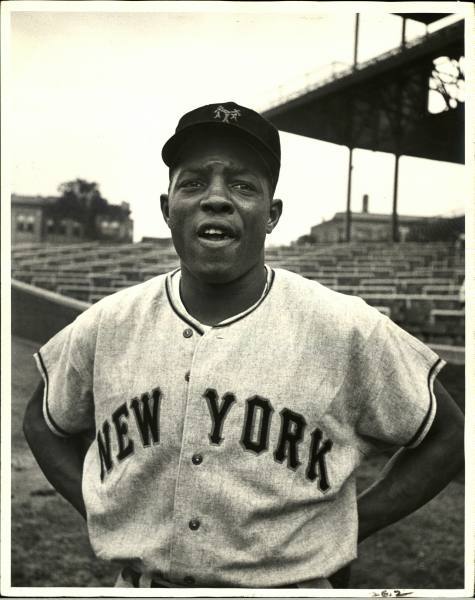
The Giants also had plenty of stars, including a superstar centerfielder named Willie Mays, the reigning National League batting champion (.345) and league MVP. Don Mueller, in right field, was second in team hitting (.342); and left-fielder Monte Irvin would one day join Willie in the Hall. The Giants’ stopper was Johnny Antonelli, an intimidating southpaw whose 21-7 record was the team’s best. With Leo “The Lip” Durocher pushing buttons in the dugout, and with the most productive pinch-hitter on the planet at his disposal, these National Leaguers might be able to keep things interesting.
The Polo Grounds, The Giants’ Secret Weapon
A critical part of the Giants’ arsenal, as it turned out, was New York’s stadium, hard by Coogan’s Hollow. Billy Martin, an astute observer of the game, once said this about his home park, Yankee Stadium:
“The ballpark defeated the Dodgers. The Dodgers would come in with all those right-handed home run hitters like Hodges, Robinson and Campanella and they’d hit balls nine miles for outs.”
Perhaps somebody should have mentioned this to the Tribe before Game One of the ’54 series, played across the Harlem River in the Polo Grounds.
The Giants definitely did not play ball in a cookie-cutter arena. No sir. Down the line in left, where Bobby Thomson had delivered a back-breaking drive against the Dodgers three years before, it was a mere 279 feet to the stands. Worse yet, a pop fly to right could qualify as a homer just by dropping over the 258-foot sign. As if to confirm that Paul Bunyan’s bathtub, only masquerading as a ballpark here, might have been meant for other purposes, a cannonball to dead center could sail a whopping 480 feet, remain in play at that absurd distance, and be harvested for out-number-whatchacallit at any given moment. (“Where triples go to die,” as a wag once said of Willie’s glove.)
This was the venue, at any rate, into which the commanding 111-43 Cleveland Indians strode for Game One played on September 28, 1954. They didn’t figure on the fate awaiting them, and neither did any of the geniuses claiming membership in the Baseball Writers Association.
Vic Wertz is Locked In!

Before (and after) being robbed at Coogan’s Bluff in the eighth inning, Vic Wertz was a one-man wrecking crew for Cleveland. He tripled home his team’s only runs in the first, doubled leading off the tenth, and added two singles for good measure in between. In any other ballpark, he would have batted 1.000 for the day, and the Indians would have gone up 1-0 in the series, approximately as forecast. He was, as baseball pundits like to say, “locked in.”
The Fateful Eighth Inning
With the score tied in the eighth, Doby opened with a walk off starter Sal Maglie. Rosen singled, putting runners on first and second with nobody down. Up sauntered Wertz, already 3-for-3. Durocher signaled for his southpaw, Don Liddle, but the resulting lefty-vs.-lefty matchup here didn’t much bother Mr. Wertz. He was hardly playing “Liddle Ball” this afternoon. Wertz quickly took an off-speed pitch, fastball, or whatever it was, “downtown,” with a legendary outcome still talked about seven decades later.
The ball seemed destined to cross the river and land in Yankee Stadium. Willie Mays raced toward the centerfield wall with his back to the plate. In a scene that remains as riveting today as then, he managed to collect this soaring rainbow over his shoulder “nine miles from home.” Wertz was out, of course, but the best part of this tremendous play was yet to happen: Instead of continuing his sprint to the wall, or tumbling to the turf as might have been expected, Mays had both the presence of mind and the physical control needed to slam on the brakes, pivot, and heave the ball toward the infield in time to prevent Doby from scoring.
“Well, I Got My Man!”
If not for these rare, acrobatic maneuvers the Giants would have been down a run, maybe two, with no crying at all from Cleveland over a three-bagger that went into a great fielder’s mitt to die. When it was all over but the shouting, Liddle, who had pitched only to Wertz before being replaced by Marv Grissom, got off a memorable baseball line: “Well, I got my man…”
In slightly better detail than that, Mays later described his defining moment to Roger Kahn:
“I’m going back, a long way back, but there is no doubt in my mind I am going to catch this ball. The problem was Larry Doby on second base. On a deep fly to center at the Polo Grounds, a runner could score all the way from second…So if I make the catch, which I will, and Larry scores from second, they still get the run that puts them ahead. All the time I’m running back, I’m thinking, ‘Willie, you’ve got to get this ball back into the infield.’ I have to turn very hard and short, and throw the ball from exactly the point I caught it. The momentum goes into my turn and up through my legs and into my throw.”
Thanks to this amazing play, the Indians were forced into extra innings in search of their vital but elusive winning run. When they squandered a leadoff double from—wait!—Vic Wertz in the tenth, their hosts were still very much alive.
Things Go Downhill Quickly For the Tribe!
As the game moved into the bottom of the tenth, Indians’ starter Bob Lemon was still on the mound. He had scattered eight hits, allowing just two runs. When the game ended, he yielded nine hits through nine-and-a-third, with more runs in that fateful fraction of an extra inning than he gave up over the entire previous nine.
Everything unraveled quickly for The Tribe: With one out, Mays walked, then stole second. Lemon then issued a pass to Hank Thompson. Durocher now elected to pull Monte Irvin in favor of his ace-in-the-hole, Rhodes, who had batted .341 as a part-time outfielder and pinch-hitter during the regular season.
A 260-Foot Homer Wins It For the Giants!
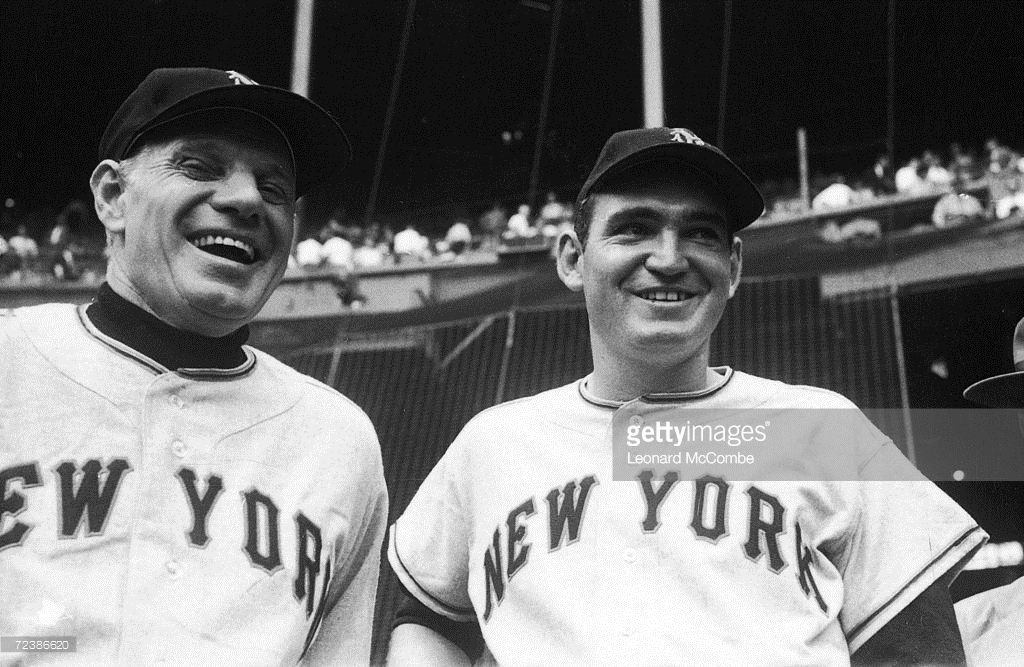
Remember Billy Martin and his apt observation, “The ballpark defeated the Dodgers”? Rhodes, batting left, sent Lemon’s first and only pitch high and shallow, up along the foul line in right. This pop fly, utterly harmless under normal conditions, traveled all of 260 feet before dropping into the stands for three runs. The game was over—and Durocher looked like a genius. In total disbelief combined with utter disgust, the victimized pitcher hurled his mitt to the mound and walked away. “Lemon’s glove went farther than my home run,” said a thrilled Rhodes, thoroughly relishing his moment in the sun. And that was about the size of it.
If the Tribe ever recovered, they kept it to themselves. Indians’ Manager Al Lopez, whose ’59 White Sox were the only other team to deny the Yankees a trip to the Fall Classic over a stretch of 16 inspired years, confessed that “we were never the same.” The Catch, as it came to be called, had ended their hopes for a championship. As if to prove it, Cleveland waited four long decades-plus for their very next World Series appearance.
Michael H. Keedy
Subscribe to our website, “Baseball History Comes Alive!” with over 1200 fully categorized baseball essays and photo galleries, now closing in on the one million hits mark with 898K hits and over 700 subscribers: www.baseballhistorycomesalive.com

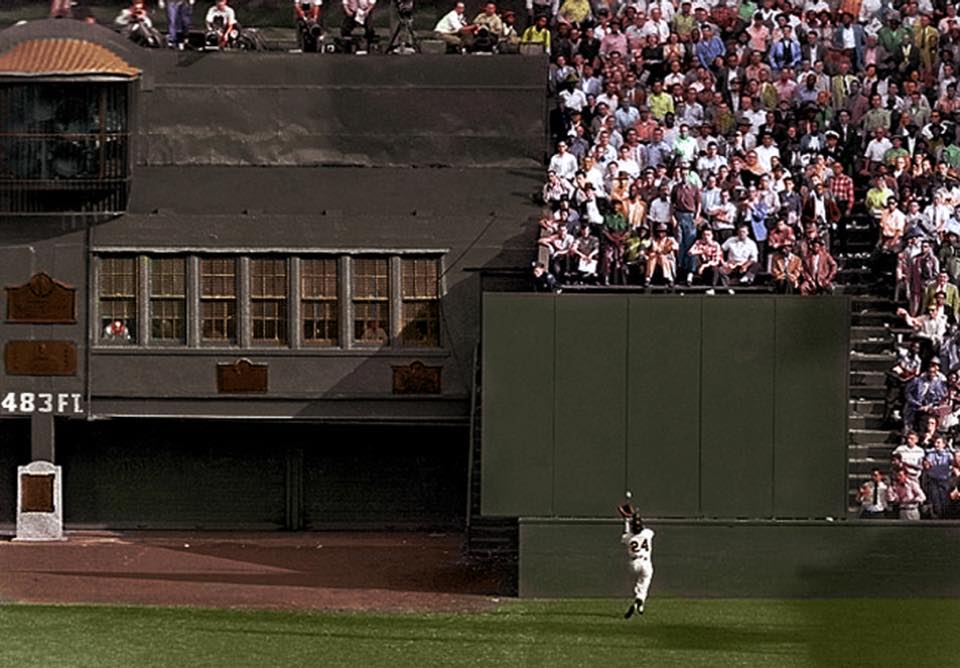
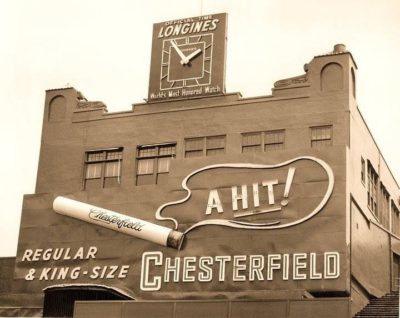
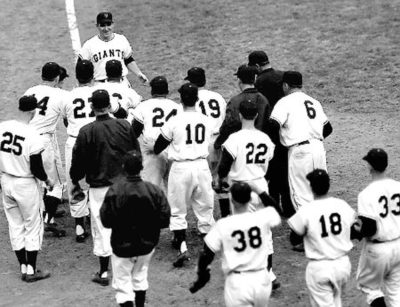
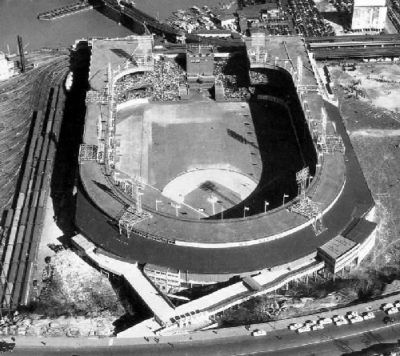
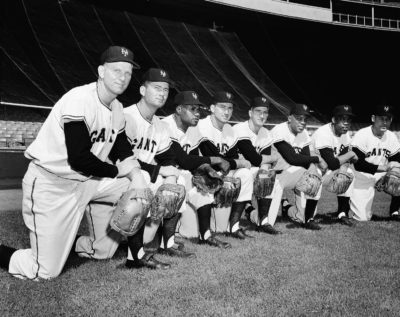
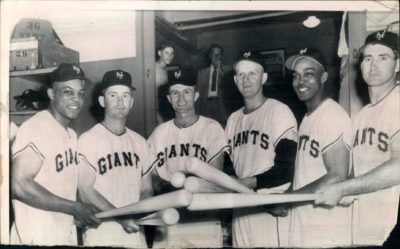
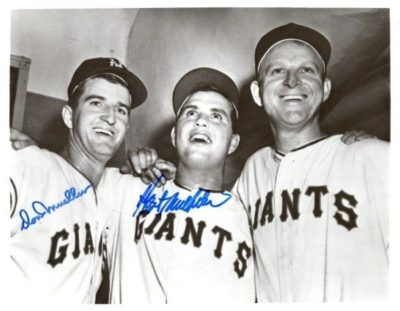
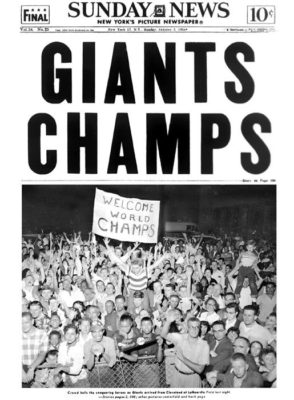
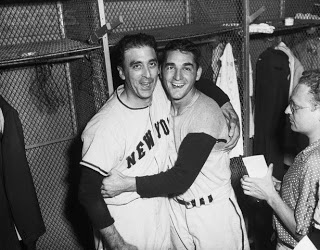
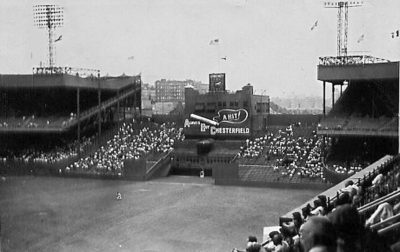
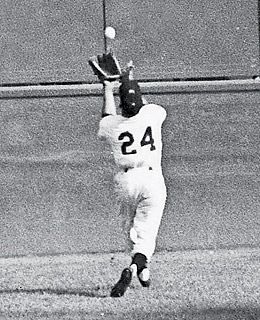
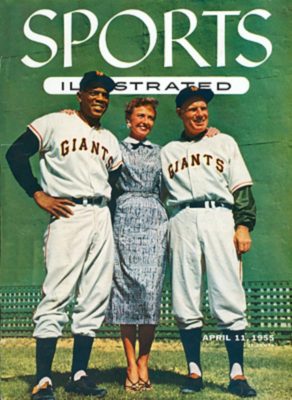
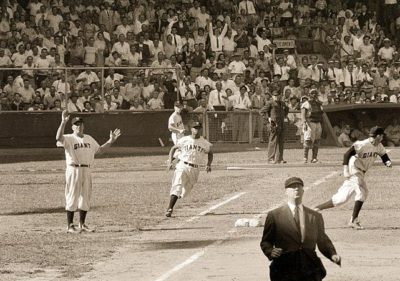
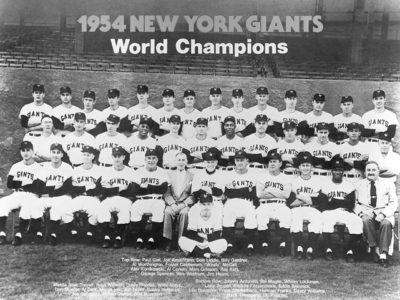
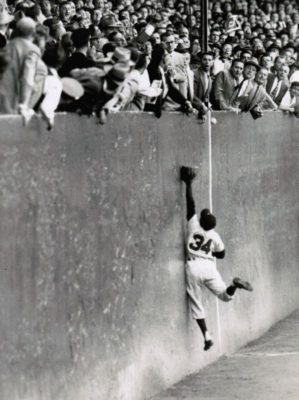
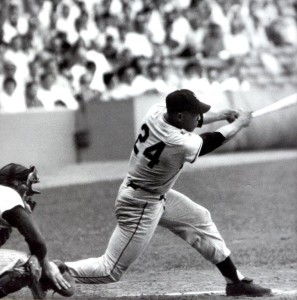
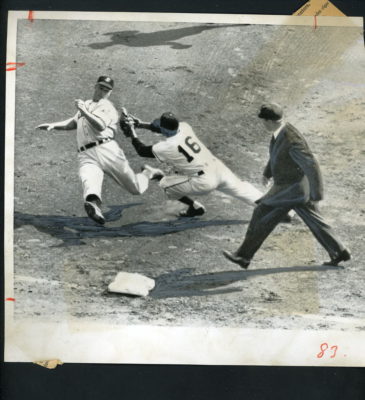
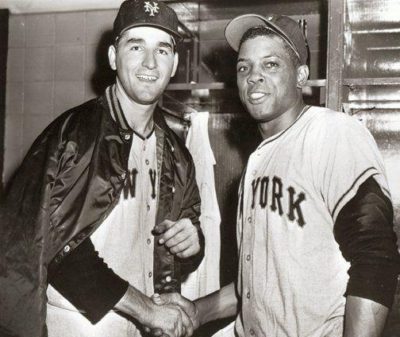
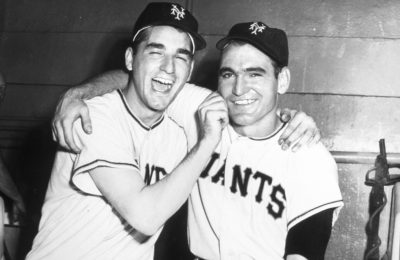
Wonderful essay by Michael! Does anyone want to take a guess as to who is the guy sticking his head out of the far left window in the featured photo? Click on this link to find the answer!
https://wp.me/p7a04E-8PX
Some older fans in Cleveland have blamed Lopez fpr the Tribe’s subpar hitting (except for Wertz). Avila, Doby, and Rosen were all nursing injuries. Lopez played them every day down the stretch, even though the team had clinched the pennant with over a week to go. Lopez, they say, wanted the A.L. record for wins, which he got, but perhaps at the cost of the optimum health of some stars. I was only seven years old and have no first hand knowledge of the ’54 series.
Willie Mays’ “The Catch” is the greatest catch in World Series history… PERIOD! Not only did Willie run many yards to overtake the shot off Vic Wertz’s bat, his powerful accurate throw back to the infield a split-second after the catch prevented Lary Doby from scoring from second base, a common occurrence in the Polo Grounds on sacrifice flies to deepest center field. To rate it merely fourth is utterly ridiculous! What a joke, I’m through following this series of the “greatest catches in World Series history!”
Chris “Mavo” Mavraedis
C’mon Chris, we’re only having fun with Sir Michael’s outstanding “Greatest World Series Catches.” As the one and only “Schnozz,” Jimmy Durante, once stated, “Everybody wants to get into the act!” And well they should. Baseball inspires controversy among fans regarding the best, most valuable, strongest, fastest, most dangerous in the clutch etc. “Twas ever thus.” Disagreeing is part of the magnetic allure of the sport.
You’re right, Mays ran full throttle, about 30 yards, straight to the drive, 425′ from home plate. And his remarkable whirl and throw to hold Larry Doby to a one base advance were just as good as the catch. And, absolutely, you could rate the grab above fourth best. But why not stick with us for the final three and find out why the captivating Keedy picked only a few catches in the history of the World Series better than Willie’s Wonder?
Then you can really let him have it!
Bill,
Maybe I overreacted to Michael’s rating of Willie’s “The Catch” merely fourth in World Series history. Though I can’t imagine three better than The Say Hey Kid’s masterpiece. We will see!
Chris ”Mavo” Mavraedis
Hey Bill:
I felt the same way you did when I read Chris’s post. Thanks for saying it so much better than I could.
One thing I would like to say about “the catch,” Willie’s instincts were uncanny. He knew exactly where the ball would come down and his body responded perfectly to the demands his mind made on it to stop head-long forward motion, pivot and throw, all in a matter of seconds. Amazon’!
Regards,
Joan
Thanks for the comment, Joan.
Exactly right, Joan! Mays knew he had the ball all the way and concentrated on the stop, pivot and throw to hold Doby.
The latter part of the play was reminiscent of a play he made at the Polo Grounds in ’51 against Brooklyn, five games into the Giants’ 16 game winning streak. Say Hey raced into right center to catch a short Carl Furillo fly ball about 320′ from home plate. That time Willie made a fairly routine snag but was running away from the infield as he did so. He never broke stride, and coming out of a super human 180 turn unloaded a seed to catcher Wes Westrum, nailing Billy Cox at home. Cox did a double take–looking at Westum, then the ball, then back at Westrum. He couldn’t believe it!
I don’t follow baseball like I used to, but I still love the history of the game, and articles like this. I am curious as to what the top catches will end up being.
Anyway, as much as I always thought I knew about the game, it always amazes me when I find out new things; one of the observations of the game that always fascinated me. Looking up some stats about this game which took place about 5 years before I really got into baseball (as an 8 year old) of course I always knew about “The Catch” (we tried to duplicate it many times!) but I never realized that Dusty Rhodes only batted 6 times in the Series but had 4 hits and 7 RBI! And Vic Wertz, in a losing effort, batted an even .500 (8 for 16) with 2 2B, a 3B, 15 TB and a slugging percentage of .938! I didn’t take the time to look it up, but that had to be one of the better performances for a player on the wrong end of a four game sweep.
Keep these articles coming; they are a welcome respite to take my mind off of what today’s game has become. (If I understand the new rules today-I really don’t care anymore- Liddle would not have been able to be replaced after pitching only to Wertz. They have absolutely ruined the game!)
Great comments and great observations, Stephen. Thanks for sharing…and I agree with everything you said, especially about today’s game.
Great article. Mays may have made the greatest catch and throw of all time, World Series or regular season.
As a White Sox fan as a kid, it made me smile to that Early Wynn and Hoyt Wilhelm were in the 1954 series. Wynn came to the White Sox and was the key to their 1959 pennant. Wilhelm came to the White Sox in the 60’s and had a great Chicago run, including mentoring Wilbur Wood, another great knuckle baller.
Thanks Jay. By the way, I got contacted yesterday by someone that read our little essay about baseball in Chicago in the ’50s. He does sports documentaries for HBO. He wants to interview me for a documentary project he’s working on about the Cubs during the 1930-1950s. Goes to show you never know who might read these posts.
Just checking in, Chris, and was delighted to see your response. So glad you’ll give Michael Keedy a fighting chance as he completes his Greatest Catches anthology.
I got a sneak preview of Michael’s top catch and, unless he’s had a change of heart, he offers compelling reasons for the choice. You may even allow he makes a good point or two.
I saw Willie’s greatest catch in person, with my dad and a diehard Dodgers fan and friend–opening day, Ebbets field, 1952. More on that, perhaps, another time.
Enjoy the holidays with us!
Best, Bill
Hey Chris:
Good for you. So glad you’ll be with us for the grand finale.
Best
Joan